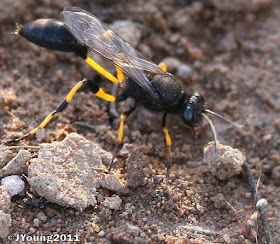This first picture is of the mother and is easily 2'6" in length. The others are the baby, only about 6-7" in length.
The Gaint Plated Lizard is the largest member of the plated lizards and may attain a total length of more than 80cm. Adults are vlackish-brown above with yellow stippling that may form lines down the body and straw yellow bars on the sides.Males have plenty of orange on the face and neck. Juveniles are black overall, but brightly marked with yellow sots on the head, back and tail with yellow bars down the neck, sides and tail. The lips, neck and throat may have whitish markings.
In South Africa, this lizard occures in the northern parts of the country and lives in horizontal cracks on rocky outcrops, usually in family units. These generally shy lizards quickly head for cover but they grow accustomed to people. They feed on plant matter including flowers and soft fruit as well as invertebrates.
The can be opportunistic feeders and will also take small lizards, rodents and the odd bird if they can.
Females lay 2-5 large white eggs in summer and the hatchlings measure about 15cm.
Information supplied by: What's that reptile by Johan Marais.
























































